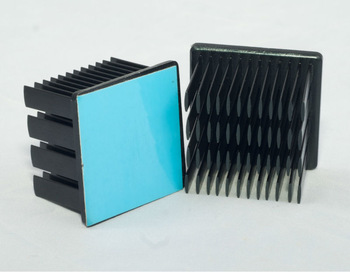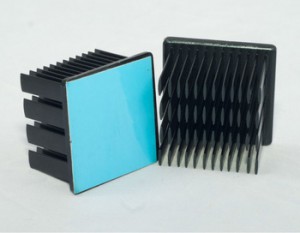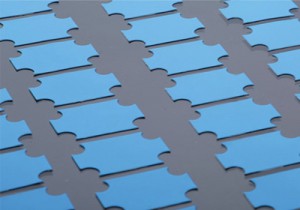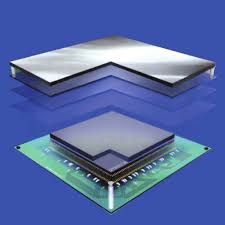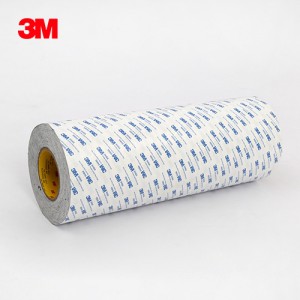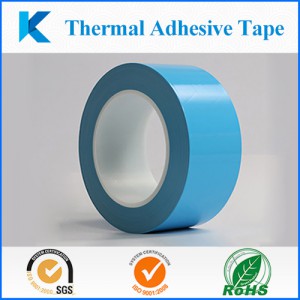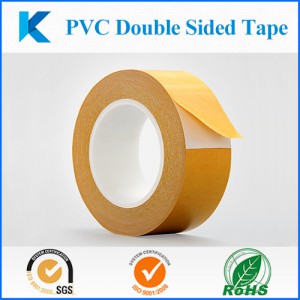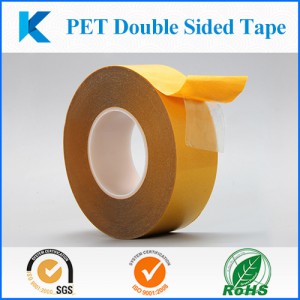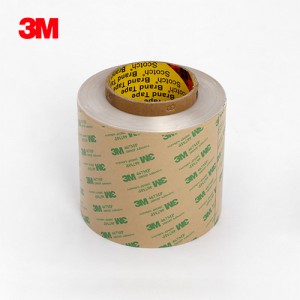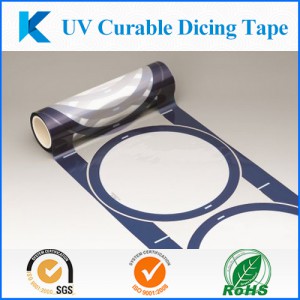Thermally Conductive Adhesive Transfer Tapes for heat sinks or other cooling devices
Short Description:
Product Detail
FAQ
Product Tags
Product Description
Thermally Conductive Adhesive Transfer Tapes are designed to provide a preferential heat-transfer path between heat-generating components and heat sinks or other cooling devices (e.g., fans, heat spreaders or heat pipes).
Features and Benefits
• High mechanical strength
• Improved surface wet-out for rough surface/LSE substrates
• Excellent shock performance
• Wider and longer roll is available
• Halogen free
• Ideal for thin bonding applications
• Good thermal transfer
Thermally Conductive Adhesive Transfer Tapes Product Construction
Color White
Tape Type: Filled Acrylic
Polymer Tape Thickness: 0.125 mm (5 mils) 0.25 mm (10 mils) 0.375 mm (15 mils) 0.50 mm (20 mils)
Filler Type: Ceramic
Liner Type :Dual liner using silicone-treated polyester. Easy release PET liner is clear in color, tight side PET liner is blue in color
Liner Thickness: 37.5-50 µm (1.5~2 mils) thickness for inside or outside wound liner.
*Halogen Free is defined as having maximum 900 ppm bromine, maximum 900 ppm chlorine, and/or maximum 1500 ppm total bromine and chlorine, per IEC 61249-2-21.
Available Sizes
Width: Maximum width 22 inches. Length: Multiples of 36 yds. Maximum 108 yds.
Custom Sizes: Contact us for more informations and availability of custom sizes (width and length) or die cut parts.
Application Guidelines
1) Substrate surfaces should be clean and dry prior to tape application. Isopropyl alcohol (isopropanol) applied with a lint-free wipe or swab should be adequate for removing surface contamination such as dust or finger prints. Do not use “denatured alcohol” or glass cleaners which often contain oily components. Allow the surface to dry for several minutes before applying the tape. More aggressive solvents (such as acetone, methyl ethyl ketone (MEK) or toluene) may be required to remove heavier contamination (grease, machine oils, solder flux, etc.) but should be followed by a final isopropanol wipe as described above. Note:- Be sure to read and follow the manufacturers’ precautions and directions when using primers and solvents.
2) Apply the tape to one substrate at a modest angle with the use of a squeegee, rubber roller or finger pressure to help reduce the potential for air entrapment under the tape during its application. The liner can be removed after positioning the tape onto the first substrate.
3) Assemble the part by applying compression to the substrates to ensure a good wetting of the substrate surfaces with the tape. Proper application of pressure (amount of pressure, time applied, temperature applied) will depend upon design of the parts. Rigid substrates are more difficult to bond without air entrapment as most rigid parts are not flat. Use of a thicker tape may result in increased wetting of rigid substrates. Flexible substrates can be bonded to rigid or flexible parts with much less concern about air entrapment because one of the flexible substrates can conform to the other substrate.
4) Application pressure guideline table for kingzom Thermally Conductive Adhesive Transfer Tapes .

5) Application Tips:
• For rigid to rigid bonding, a twisting motion during assembly of the substrates will improve wetting. This should be a back and forth twisting motion during the application of compression.
• For flexible to rigid or flexible to flexible bonding, a roll lamination system may be employed to apply the flexible substrate down to the rigid (or other flexible) substrate. Rubber nip rollers, heated steel rollers, and other methods can be employed to bond in a continuous manner.
• Heat can be employed to increase wetting percentage and wetting rate of the substrates and to build room temperature bond strength.
• Primers may be employed to increase adhesion to low surface energy substrates (eg. plastic packages). Contact us for more information about primers.
• For best product performance, it is important to use pressure and time conditions to achieve as much wetting as possible.
6) Rework Tips:
• Rework requires separation of the two substrates. Separation can be accomplished by any practical means: prying, torquing or peeling. The tape will be destroyed upon separation and must be replaced. The surfaces should be re-cleaned according to the recommendations in this data page.
• Heating up the substrates can reduce the adhesion level and make removal easier.
• Part separation can be aided by immersion in warm water. This should eventually reduce the adhesion and make prying, torquing or peeling apart the substrates easier.
Shelf Life
The shelf life of Kingzom Thermally Conductive Adhesive Transfer Tapes is 24 months from the date of manufacture when stored in the original packaging materials and stored at 22°C (72°F) and 50% relative humidity.
Note: Custom sizes are available upon request and supply free sample for test.
FAQ Content
